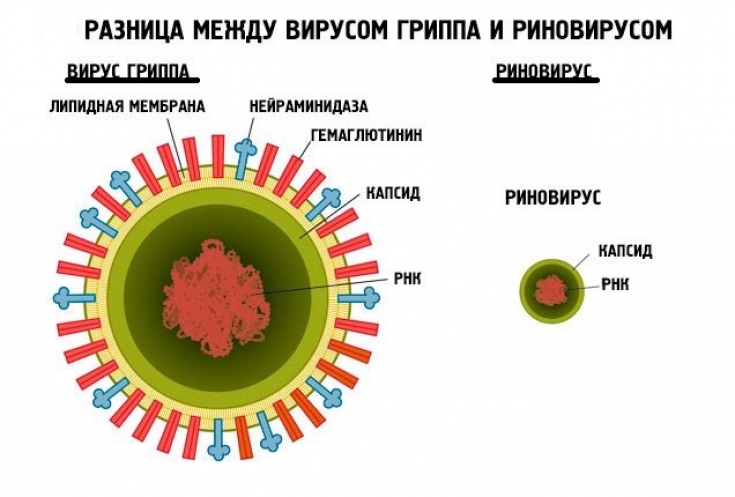With the onset of the first autumn colds, more and more patients are turning to the doctor who complain of malaise, nasal congestion and other symptoms of the "cold". This is not surprising, because September is the month when episodes of rhinovirus infection are most often recorded.
The relevance of rhinovirus infection is due to its ubiquitous distribution and high susceptibility of the population to the disease. Despite the fact that rhinovirus infection in most cases is mild, it can be a background for the development of bacterial complications and exacerbation of chronic respiratory diseases.
For more information about the etiology, symptoms of rhinovirus infection, as well as modern approaches to the treatment of the disease, read on estet-portal.com in this article.
Rhinovirus infection: history and etiology of the disease
The rhinovirus infection, commonly known as the "cold", has a rather interesting history of study. Back in 1914, W.Kruse proved the infectious genesis of the disease. To this end, he used mucus filtrates, taking sick people from the nose, and infecting volunteers.
In 1930, a viral etiology of the disease was first proposed, but only in 1956 W.Price was the first to isolate the pathogen. Subsequently, many of their serotypes have been identified.
Rhinoviruses belong to the Picornaviridae family and contain single-stranded RNA. The pathogen is unstable in the environment, sensitive to drying.
The temperature of the internal environment of the human body is also detrimental to the rhinovirus, which is why the pathogen almost never causes severe forms of the disease.
Follow us on Telegram
Rhinovirus infection: epidemiological aspects of the disease
The main mechanism of transmission of rhinovirus infection is aerosol-aerogenic. Infection can also occur through household contact.
The source of infection is an infected person, and it does not matter whether he has symptoms of the disease (sneezing, runny nose) or not (subclinical form of infection). An infected person poses the greatest epidemic danger on the second or third day of illness, when the content of the virus in the nasal secretion reaches its maximum values.
Rhinovirus infection always proceeds in a mild or moderate form. As mentioned above, the pathogen does not have the ability to cause a generalized form of the disease, since the temperature of the internal environment of the body has a detrimental effect on it.
Read also: Influenza season is coming: modern approaches to treatment and prevention
Rhinovirus infection: clinical picture, leading symptoms of the disease
The incubation period is 1 to 6 days. The disease begins acutely: nasal congestion, sneezing, a sensation of sore throat appear. It is possible to increase the temperature to subfebrile values, but often the temperature remains normal.
The leading symptom of rhinovirus infection is rhinitis. Due to edema of the mucous membrane, nasal breathing becomes difficult, abundant serous discharge from the nose appears. The skin around the nasal openings becomes macerated. The mucous membrane of the oropharynx may be hyperemic, but most often – intact.

The duration of the infection does not exceed 7 days on average, the clinical picture is most pronounced on the 2nd-3rd day of the disease.
Modern aspects of medical treatment of rhinovirus infection
There is no etiotropic treatment for rhinovirus infection.
Vasoconstrictor drugs are advisable to facilitate nasal breathing, but the duration of their use should not exceed 5 days.
It should be noted that the use of nasal drops containing antibiotic solutions is not only useless, but to some extent even dangerous, since it can lead to patient allergization.
The role of the herpes simplex virus in the occurrence of dermatological diseases
Prescribing antihistamines is advisable only if the disease occurs against an allergic background (for example, if the patient has allergic rhinitis).
The use of antiviral drugs for the treatment of rhinovirus infection is not appropriate, since there is no evidence base regarding their effectiveness in this case.
Thank you for staying with estet-portal.com. Read other interesting articles in the "Infectology" section. You may also be interested in: Types of influenza viruses and the main clinical symptoms of the disease.







Add a comment